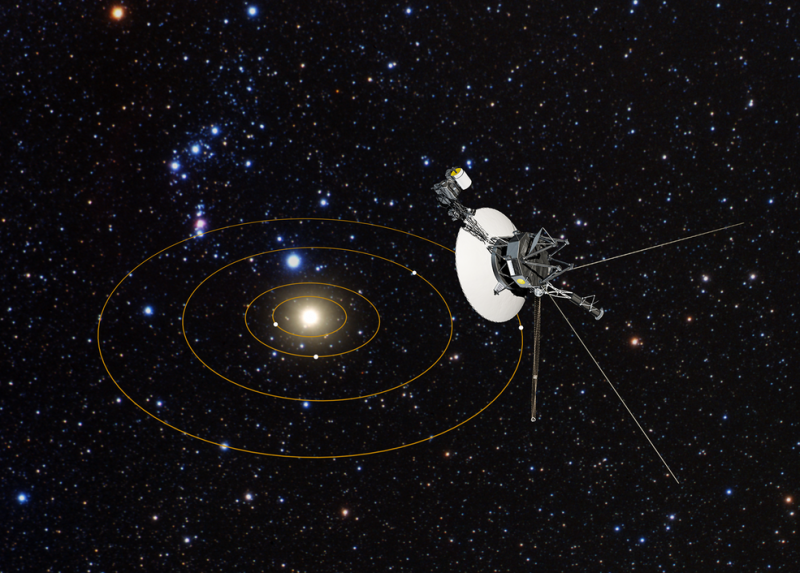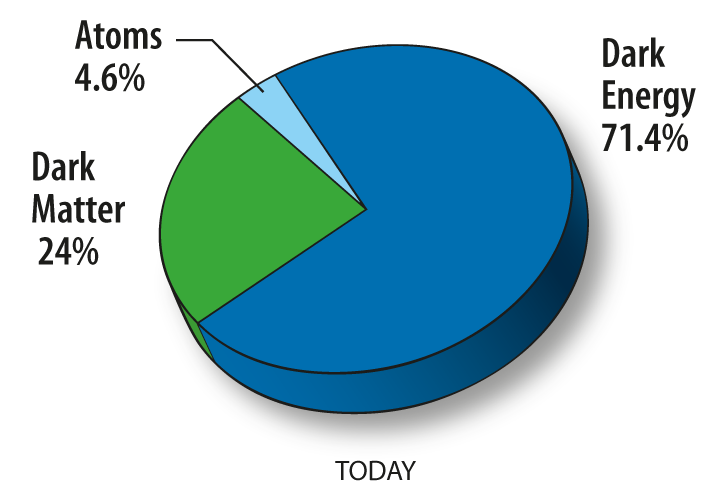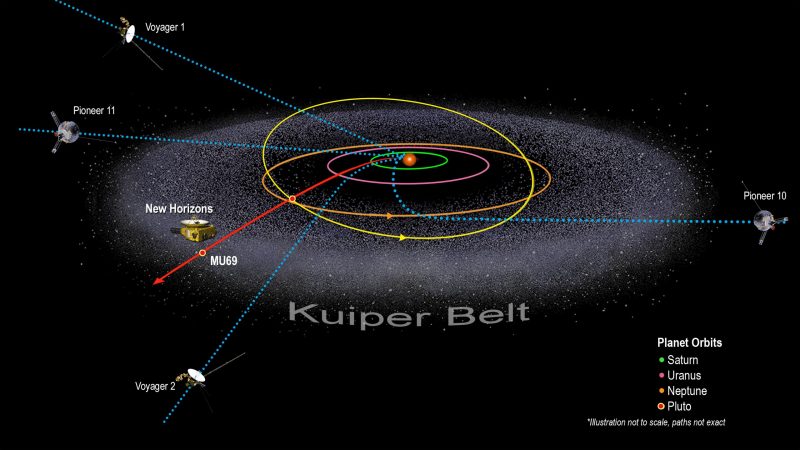
Dark matter pervades our solar system
Dark matter doesn’t interact with ordinary matter. It’s invisible to light and other forms of electromagnetic radiation. So modern instruments can’t “see” it. But dark matter does have mass. And that means it has a gravitational pull. Via studies of its pull, astronomers have collected overwhelming indirect evidence suggesting dark matter pervades our universe. And so our solar system – our family of planets orbiting the sun – must contain dark matter, too. On February 1, 2022, NASA reported on a new study that calculates the pull of dark matter on objects in our solar system, for example, spacecraft and distant comets. Then the study proposes an experiment for detecting dark matter within our solar system.
The 2022 lunar calendars are here. Order yours before they’re gone!
The study is called When leaving the solar system: Dark matter makes a difference. The peer-reviewed journal Monthly Notices of the Royal Astronomical Society published it.
The study’s lead author is mathematician and astrophysicist Edward Belbruno of Princeton University and Yeshiva University. He calculated what he called the galactic force, that is, the overall gravitational force of normal matter combined with dark matter, from the entire Milky Way galaxy.
Solar system is half dark matter and half normal matter
He found that in our solar system, about 45% of this force is from dark matter and 55% is from normal, so-called baryonic matter. This suggests a roughly half-and-half split between the mass of dark matter and normal matter in our sun’s family.
So half the solar system might be dark matter! Yet Belbruno said he was surprised the percentage of dark matter in our solar system wasn’t higher:
I was a bit surprised by the relatively small contribution of the galactic force due to dark matter felt in our solar system as compared to the force due to the normal matter. This is explained by the fact most of dark matter is in the outer parts of our galaxy, far from our solar system.
.

Galactic force and our outbound spacecraft
NASA explained that Belbruno and study co-author James Green of NASA went on to predict that dark matter’s gravity “ever so slightly” interacts with all of the spacecraft that NASA has sent on paths out of our solar system:
That might include, for example, the retired Pioneer 10 and 11 probes that launched in 1972 and 1973, respectively; the Voyager 1 and 2 probes that have been exploring for more than 40 years and have entered interstellar space; and the New Horizons spacecraft that has flown by Pluto and Arrokoth in the Kuiper Belt.
It’s a tiny effect. After traveling billions of miles, the path of a spacecraft like Pioneer 10 would only deviate by about 5 feet (1.5 meters) due to the influence of dark matter, NASA explained. Still … space is vast. And our outbound spacecraft will eventually travel billions of miles.
The pull of dark matter beyond Pluto
Belbruno and Green calculated that earthly craft would feel the pull of dark matter at around 30,000 astronomical units (AU) from the sun. That’s 30,000 times the Earth-sun distance. It’s well beyond Pluto, but still inside the Oort Cloud, which extends out to 100,000 astronomical units. So it would have big implications. NASA explained:
This means that dark matter’s gravity could have played a role in the trajectory of objects like ‘Oumuamua, the cigar-shaped comet or asteroid that came from another star system and passed through the inner solar system in 2017. Its unusually fast speed could be explained by dark matter’s gravity pushing on it for millions of years, the authors say.
If there is a giant planet in the outer reaches of the solar system – a hypothetical object called Planet 9 or Planet X that scientists have been searching for in recent years – dark matter would also influence its orbit. If this planet exists, dark matter could perhaps even push it away from the area where scientists are currently looking for it, Green and Belbruno write. Dark matter may have also caused some of the Oort Cloud comets to escape the orbit of the sun altogether.
Could we measure dark matter’s pull in our solar system?
These scientists believe that – to measure the effects of dark matter in our solar system – a future spacecraft wouldn’t necessarily have to travel 30,000 AU. But it would have to be carrying the right equipment. At a distance of 100 AU, they said, a future spacecraft could help astronomers measure the influence of dark matter in the following way:
Specifically, a spacecraft equipped with radioisotope power, a technology that has allowed Pioneer 10 and 11, the Voyagers and New Horizon to fly very far from the sun, may be able to make this measurement. Such a spacecraft could carry a reflective ball and drop it at an appropriate distance. The ball would feel only galactic forces [combined gravitational force from both dark and ordinary matter]. Meanwhile, the spacecraft would experience a thermal force from the decaying radioactive element in its power system, in addition to the galactic forces.
Subtracting out the thermal force, researchers could then look at how the galactic force relates to deviations in the respective trajectories of the ball and the spacecraft. Those deviations would be measured with a laser as the two objects fly parallel to one another.
Interstellar Probe mission
A proposed NASA mission called Interstellar Probe might be able to do it. This one-way, 50-year mission into the depths of space is currently being studied by the Johns Hopkins Applied Physics Laboratory. Its goal is to travel to about 500 AU from the sun – 500 times the Earth-sun distance – to explore the space between the stars. Can we outfit this mission with a “reflective ball,” as described above? I vote yes!
Read more from NASA about measuring dark matter in our solar system

Bottom line: Science is all about measuring things. And, according to modern astronomers, dark matter pervades our solar system. Can we find a way to measure it? Two scientists say yes, and propose a mechanism.
Source: When leaving the Solar system, dark matter makes a difference











